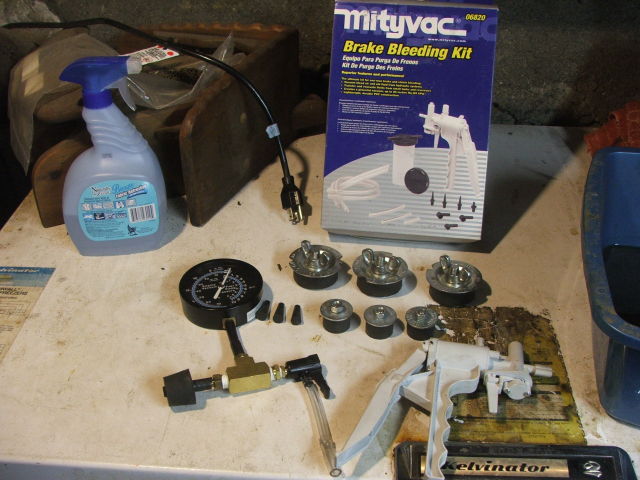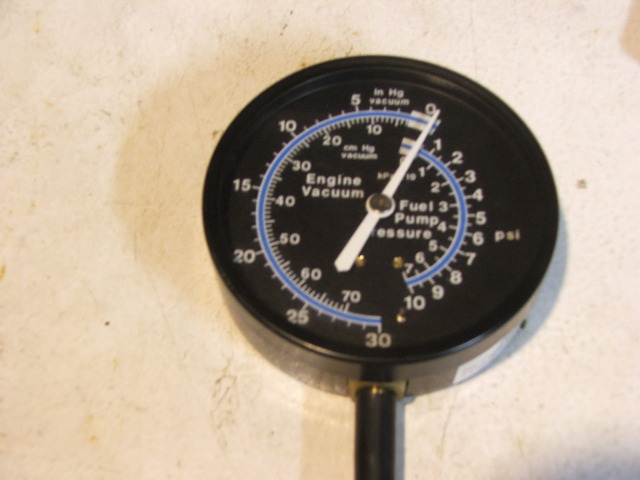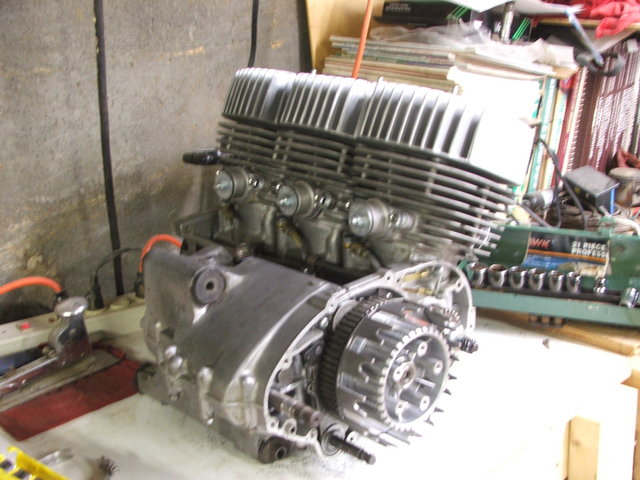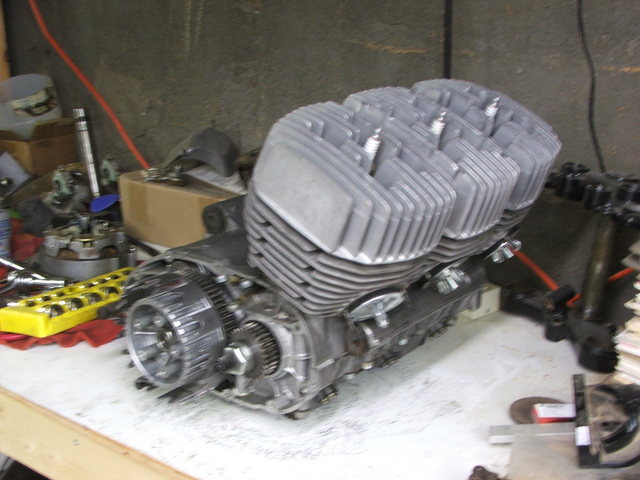
Crankseal Testing
A crankseal test (leakdown test) is the only way to test the integrity of crankseals and/or air leaks from manifolds, headgaskets, base gaskets, etc. A proper test is to apply 6 psi pressure, which should hold for 6 minutes. A followup test should be with vacuum, 6 psi/6 min. A crankshaft with rubber crankseals should be tested one cylinder at a time. A crankshaft with metal labyrinth seals must be tested on all cylinders at the same time. Excessive pressure can blow out seals.
Crankseal Test Kit
Curt wrote:
First you need a Mityvac like the one in the first pix.
Next, the rubber stoppers I got at home depot. The large ones are 2" they go in
the exhaust holes .You will need to alter the sides so they fit past the exhaust
studs. The small ones are 1 1/8", they go in the intake holes. You
don't need three of them just two. The smallest ones next to the gage go
into the oil line holes. The left contraption was made by me .The rubber
stopper at the end is 1" at small end and 1 1/4" on big end. I drilled a
hole through it for the rubber hose. The opposite end is from a bicycle
pump .I don't remember where I got the gage from, but it needs to have both
pressure and vacuum test on it.


The rubber stopper on the gage tester goes into the air intake side. You must first pump the pressure up to 6lbs and no more or you will pop out your seals at the ends of the crank. It must hold 6lbs for 6 min. If it passes that test then you do the vacuum test the same way 6 lbs for 6 min. You may have to hold the rubber stopper in with your hand like I did or it will pop out .

